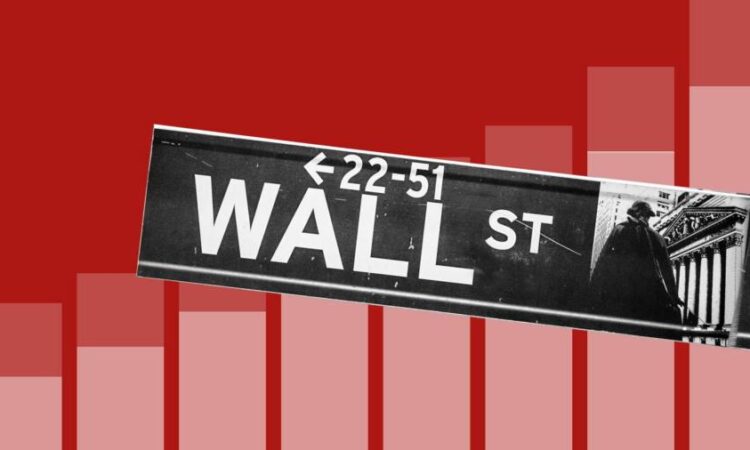
US tech stocks remained the focus of attention on Monday as more data pointing to a cooling economy prompted investors to seek haven in the sector.
The tech-heavy Nasdaq Composite rose 0.4 per cent, extending its gains from the previous week, while Wall Street’s benchmark S&P 500 continued to lag, remaining flat in late-morning trade.
The day’s moves fall into a wider trend of growth stocks outpacing value ones since the start of the year. Growth stocks’ business models are less cyclical than value stocks and so appeal more to investors in times of economic downturns.

Meanwhile, fresh economic data on Monday added to signs that the Federal Reserve’s aggressive interest rates policy has begun to take effect. The New York Fed on Monday said its index measuring manufacturing activity in New York state plummeted from 10.8 to minus 31.8 in May, far below analysts’ forecasts of minus 3.8.
May’s month-on-month decline echoed a similarly sharp drop in the index during the same month last year, however, suggesting there was a seasonal adjustment problem or “other difficulty” with April data, said Joshua Shapiro, US economist at MFR consultancy.
Traders also awaited Tuesday’s release of US retail sales data for April, which may offer insight into consumer sentiment as inflation cools and high borrowing costs take hold.
Analysts forecast the Census Bureau will report a 0.7 per cent increase in overall retail sales from the previous month, following two months of declines.
However, many investors were looking ahead to a breakthrough between the White House and Republicans in Congress over talks to avoid an unprecedented national default.
“The stock market is stuck until we reach a debt-ceiling resolution and until we see more clarity from the regional banking sector, which are the two factors weighing on stocks right now,” said Brad Bernstein, managing director at UBS Wealth Management in the US.
The yields on interest rate-sensitive two-year Treasury bonds was flat at 4 per cent, while the 10-year bond was up 0.041 percentage points at 3.5 per cent. Bond yields rise when prices fall.
The dollar fell 0.2 per cent against a basket of six other currencies, despite data last week showing US consumer expectations for long-term inflation had reached a 12-year high.
In Europe, the region-wide Stoxx 600 rose 0.2 pre cent, while France’s CAC 40 and Germany’s Dax both ended the day flat, having steadied after trading down during much of the session.
Eurostat, the EU statistics agency, reported the eurozone’s industrial production fell 1.4 per cent year on year in March, after rising 2 per cent the previous month.
The reading was well below the 0.9 per cent rise forecast in a Reuters poll of economists, suggesting that the European Central Bank’s tightening campaign was cooling the region’s economy faster than expected.
In particular, the drop in the production of capital goods “certainly suggests that the additional tightening in credit standards might have hit activity at the end of the first quarter”, said Claus Vistesen, chief eurozone economist at Pantheon Macroeconomics.
“It’s still not enough for the ECB to be convinced that its job is done,” said Mohit Kumar, chief European economist at Jefferies. “They still need to hike more to fight inflation, but the economic data indicates that they are not far from being done.”
Shares in Swedish real estate company SBB rebounded 10.6 per cent after the group on Friday said it raised $276mn through the sale of construction company JM. The value of SBB tumbled last week after S&P Global downgraded the company to junk status after concerns about its exposure to rising interest rates.
Meanwhile, Germany said its wholesale price index recorded its first year-on-year drop since December 2020.
Asian stocks rose, with China’s CSI 300 climbing 1.6 per cent and Hong Kong’s Hang Seng index adding 1.8 per cent. China’s renminbi fell on Monday to its weakest level against the dollar in two months.






